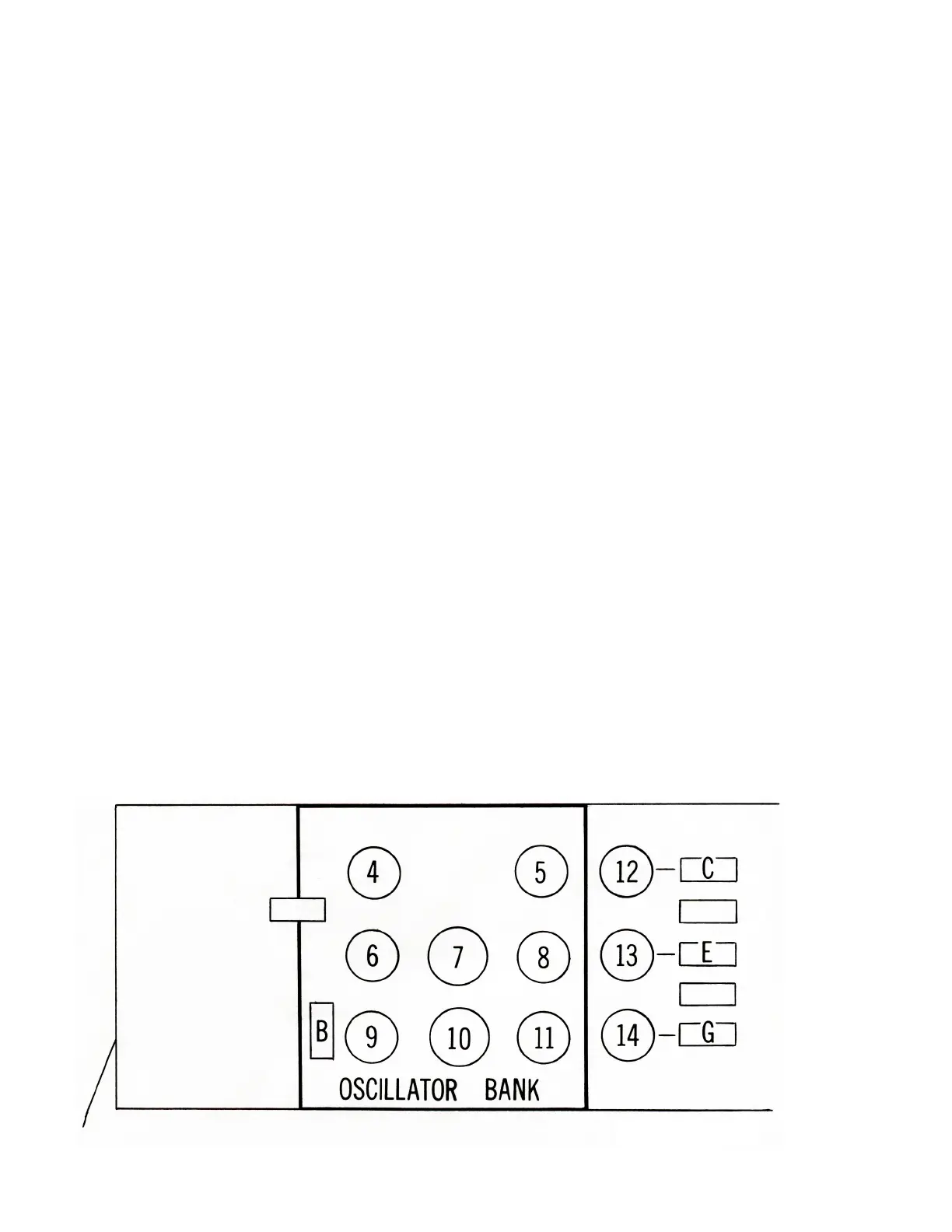5
The triangular waveform has the least harmonic content; the
narrow rectangular has the most. Generally your ear will be
your best guide in deciding which waveform to use for a
particular quality.
3 ) The VOLUME control (12) adjusts the amount of Oscillator 1
signal which is fed to the mixer, while switch (C) instantly
turns the oscillator on or off. Oscillators 2 and 3 may be
heard by turning on switches (E) and (G) respectively, and
their relative volumes may be adjusted with VOLUME controls
(13) and (14).
4 ) FREQUENCY controls (7 and 10) are found only on Oscillators
2 and 3. These controls raise or lower the pitch of their
oscillator by as much as a major sixth with respect to
Oscillator 1. To hear this, turn on switches (C) and (E), turn
off (G), and depress a key. Adjust control (7) until the pitches
of Oscillators 1 and 2 are nearly in unison. As you move up
and down the keyboard, the pitches of the two oscillators will
move together. Now turn control (7) clockwise while depressing
a key, until a perfect fifth is made. Once again, this interval
will remain constant as you play different notes on the keyboard.
Any intervals within the range of the oscillators may be set up
simply by setting the RANGE switches and FREQUENCY controls
a p p r o p r i a t e l y .
5 ) By turning off the OSCILLATOR 3 CONTROL switch (B), Oscillator 3
may be disconnected from the control of the keyboard. To observe
this, turn off switches (B), (C), and (E), and turn on switch (G).
The pitch of the oscillator will not change as different keys
are struck. You will also observe that Oscillator 3’s FREQUENCY
control has a much wider range when switch (B) is off. If you
hold down one key and turn control (10) through its range, you
will hear a frequency sweep of 6 octaves rather than one octave.
Fig. 3

